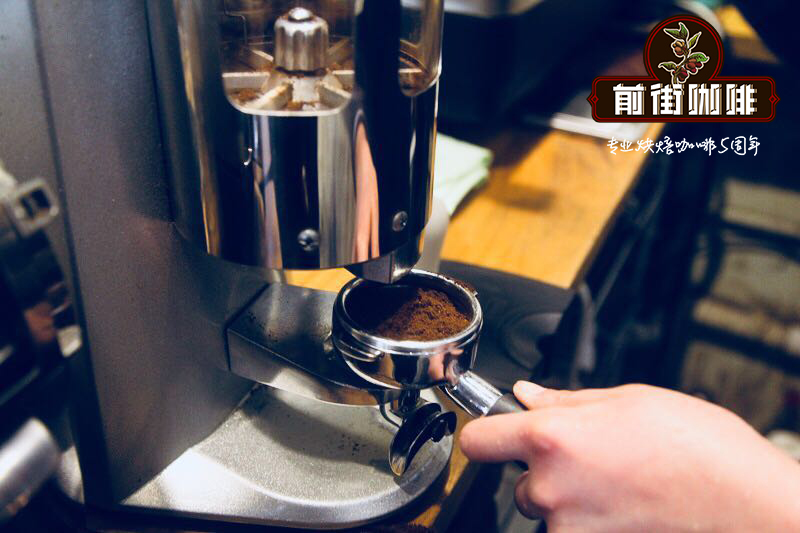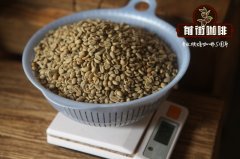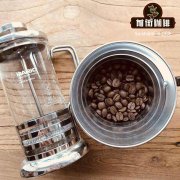What should you know about the EK43 bean grinder? How can I make coffee powder without tools?
What should you know about the EK43 bean grinder? How to make coffee without tools?

Sometimes it's hard to say what the future will turn out to be, and to make predictions or forecasts useless, just ask Thomas Watson, IBM's former president, who confidently proclaimed in 1958 that "it takes only five computers to make the world market work perfectly."
To use a less comical metaphor that is closer to our lives, I didn't think boutique coffee would flourish five years ago, when the grinder predicted to appear in the most popular coffee shops would be a 30-year-old retro design (originally designed to grind spices), and this grinder was undoubtedly the EK43 from Mahlkonig.
From ground to ground coffee
EK was originally designed as a grinder for hand-brewed drip coffee, and its advantages (discussed later) outweigh its inherent disadvantages of unstable powder supply (e.g., 20 grams of coffee beans, error 1-1.5 grams of powder).
Jacob Denaro puts in pre-weighed coffee beans, which is a prerequisite for using EK in cafes.
However, all this changed at the hands of Matt Perger, the 2013 World Barista Championship winner, when he prepared coffee with EK43 on the main stage. Although Perger was not the first barista to be praised for using EK ground espresso, he was undoubtedly a popular barista.
So what's so good about it? And if it's so good, why doesn't everyone use it?
Advantage 1: Uniformity of grinding
The main advantage of EK43 is the uniformity of grinding, all grinders produce bimodal distribution of particles (polarization by Lijing analysis), while EK is no different in this respect. That is, grinding generally compromises due to polarization of particle size, although there are fine errors below 100 microns, but particle size errors are usually in the range of 200-1000 microns. But using EK, the particle size error is significantly smaller than other bean grinders.
Set the grind scale of the coffee machine, EK became a coffee shop to see how they use it to brew single-ground coffee and drip coffee.
Perger and others in the fine coffee community analyzed the particle size distribution of EK43 and found that, contrary to initial assumptions, it did not produce a more uniform grind size because it produced fewer crumbs (in fact, it operated to produce more crumbs than many other well-known grinders). However, at the grinding setting for extraction, it produces a more uniform particle size than other bean grinders. In fact, its particle size is smaller, so its grinding size is finer than other competitors 'bean grinders. It also grinds out less powder and larger particles (clumps).
What does uniformity mean for coffee? It means a lot. The more uniform the size of the grind, the more uniform the extraction of coffee will be.
Advantage 2: More uniform extraction
Curious why particle size affects extraction? Smaller particles have a larger surface area, so extraction will be relatively easy-the opposite is true for larger particles.
For most coffee lovers, EK's handle and method of powder injection are unusual, although the operation process is not very simple, but many people think it is worth the extra effort.
Uneven grinding may produce an average extraction rate of 20%(roughly speaking, the proportion of powder in an espresso determines the quality of a cup of coffee), which will make the parameters of coffee traditional extraction good, but this may include 10% extraction of large particles, about 18% extraction of medium particles, and 25% extraction of fine particles.
EK produces particles of more uniform size, so the extract contains a high proportion of particles of similar size, so similar extract particles have a significant impact on flavor.
Higher extraction has more flavor
EK brewing results can be pushed to higher levels of extraction without negative impact, which is usually required for conventional bean grinders.
EK requires removal of the grinder, the connection is designed as a pocket clamp, pressurized by an actuating spring.
Many grinders, especially these conical grinders, brew more than 20% extract and can become overdiluted or unpleasant to drink. This is the main consequence of uneven grinding and different extraction rates, and EK, after comparison, can brew good coffee with a higher yield, because brewing a good cup of coffee does not allow such a large difference in extraction rates.
Disadvantages of EK43
With these advantages, you may wonder why EK43 is not popular in boutique coffee shops, mainly because of its practicality, it does not have the ability to consistently supply accurate powder.
Coffee shops that brew espresso usually measure the beans for a single cup and store them in containers, which is of course time-consuming and inefficient in terms of space utilization (hundreds of well-measured beans in small cups take up an amazing amount of storage space).
Picture shows readjusting EK, in which case the weight of the coffee grinder scale is small. Most baristas measure more than they need because they lose some ground when they pop out of the hopper.
However, when it comes to the practicality of EK, there is something to be expected, although it is inconvenient to measure the weight of a single cup of beans in advance and store them in a suitable container (such as a sealed opaque jar), but in fact the adjustment error of the grinder is very small, significantly reducing the loss of coffee powder, which is also the main advantage of EK. When serving single-serve coffee, you can brew multiple espresso coffee without buying an additional grinder (although it takes some time to switch grinding settings when switching single-serve beans).
Rotational or rotary packing can be applied evenly to the disk, which is designed to slow the flow rate and theoretically improve extraction. But after a day your wrist may be a little sore.
The latest solution
If this sounds difficult, there is a solution: the Mahlkonig Peak grinder combines the EK43-style grinder, particle size distribution, and instant grinding features of the K30 grinder. The downside is that the expected price is high (similar to the current UK interest rate) and if you want to brew multiple coffees at once, you need more than one grinder.
Until the Peak bean grinder went on sale, the EK43 was still a high-level extraction bean grinder.
Important Notice :
前街咖啡 FrontStreet Coffee has moved to new addredd:
FrontStreet Coffee Address: 315,Donghua East Road,GuangZhou
Tel:020 38364473
- Prev

The cooperative farm United by Kenyan coffee farmers is different from the autonomy of other large farms.
Kenya is bordered to the north by Ethiopia, the origin of Arabica coffee trees, but it was not until the beginning of the 20th century that coffee cultivation began. In the 19th century, missionaries introduced Arabica trees from Yemen, but did not plant them in large quantities. It was not until 1893 that coffee was cultivated on a large scale after the introduction of Brazil's ancient bourbon seeds. That is to say, Kenyan coffee was of Brazilian origin.
- Next

The classification of coffee grinder, understanding of bean grinder, how to soak coffee powder with tools?
The classification of coffee grinder, understanding of bean grinder, how to soak coffee powder with tools? We talked about the coffee brewing equipment before, but we didn't have time to talk about the coffee bean grinding equipment, which is also one of the core utensils. Let's take a look at it today. Lao Lin has seen many people who would rather spend a large amount of money on other coffee-making utensils than configure a better grinder.
Related
- Detailed explanation of Jadeite planting Land in Panamanian Jadeite Manor introduction to the grading system of Jadeite competitive bidding, Red bid, Green bid and Rose Summer
- Story of Coffee planting in Brenka region of Costa Rica Stonehenge Manor anaerobic heavy honey treatment of flavor mouth
- What's on the barrel of Blue Mountain Coffee beans?
- Can American coffee also pull flowers? How to use hot American style to pull out a good-looking pattern?
- Can you make a cold extract with coffee beans? What is the right proportion for cold-extracted coffee formula?
- Indonesian PWN Gold Mandrine Coffee Origin Features Flavor How to Chong? Mandolin coffee is American.
- A brief introduction to the flavor characteristics of Brazilian yellow bourbon coffee beans
- What is the effect of different water quality on the flavor of cold-extracted coffee? What kind of water is best for brewing coffee?
- Why do you think of Rose Summer whenever you mention Panamanian coffee?
- Introduction to the characteristics of authentic blue mountain coffee bean producing areas? What is the CIB Coffee Authority in Jamaica?

